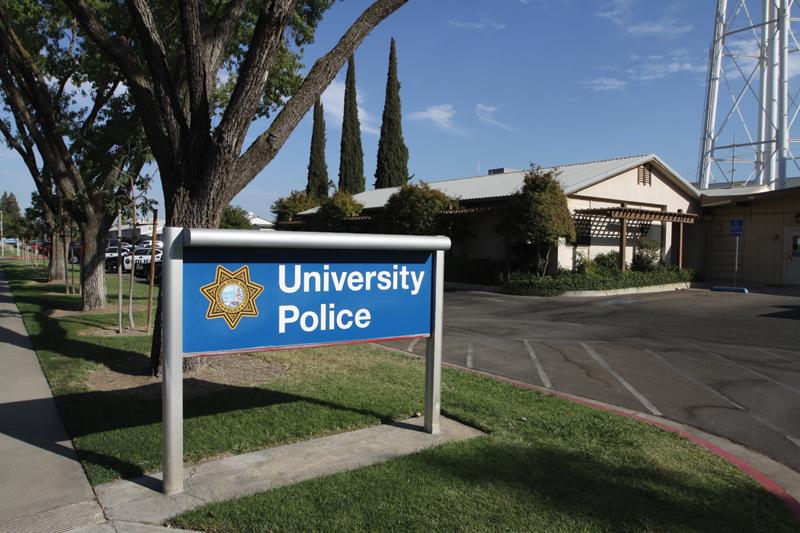Carnage. Bodies strewn about. Indelible images broadcasted on countless news channels.
Every week it seems there is another shooting story in America.
Many instances of gun shootings happen on or near school campuses. We can recall the Sandy Hook massacre in 2012, the Virginia Tech shooting in 2007 and too recently, the massacre of 58 people in Las Vegas. Just to name a couple.
Can we ever be prepared for such a situation here? Fresno State has put together a comprehensive plan for students and faculty to follow.
The plan is an active shooter response training program called Seconds to Survive, said Fresno State emergency operations manager Amy Luna.
The training is primarily for police officers on campus, but there is a version that is open to all students on campus — free of charge. The training is conducted every other month during the semester. The next is Nov. 8 at Kremen Education Building, Room 140.
A three step process is at the center of the training. Attendees are taught to follow the “Run, Hide, Fight” model.
“What we teach at that program is how to plan and prepare because the most important thing is to really evaluate your environment. As your environment changes through the day, your plans your options are going to be different, so that’s really what we kind of focus on,” Luna said.
The first part of the plan, “Run,” is arguably the most important, Luna said.
She said that wherever students walk, they should always examine their surroundings and know where the nearest exits are.
Finding the best ways to exit a dangerous situation is part of the evaluation process. The next step: knowing what to do after reaching an exit, Luna said.
“Part of running is not just finding how to get out, but where to go after, she said. We run not just from danger but to safety.
The next part of the training, “Hide,” is the step students and faculty should follow if running is not an option.
According to this step, people should look for places that are as secluded and as safe as possible. All doors should be barricaded with whatever is available, like desks, tables or whatever else is big and can help keep someone from the outside getting into the hiding space.
It is also important for those hiding to remain as quiet as possible, Luna said.
The final step, “Fight,” should be a last resort.
The university released a safety video and broadcasted it to students on its website. It mentions that it is important to find items that can be used as weapons to fight danger. But this step should be avoided if at all possible, she said.
The safety training plan is not a static one. It is always being updated based on what is learned from shootings in other places, Luna said.
“After Virginia Tech happened, we invited their chief of police to come to our campus and provide a debriefing of what actually happened; a timeline of what folks did to protect themselves in that situation and then we also sat through the briefing from the chief of police from Sandy Hook,” she said.
Many students don’t know the program exists. It becomes a problem because little is often known about what to do in an active shooter situation.
“During an active shooter, the only thing that I would know to do is try to remain calm,” said Fresno State art student Bobby Brown. “I wouldn’t know exactly what to do. Everybody would like to think that they would be brave in that moment and charge the gunman and take him down, but usually that’s not the case.”
Freshman art student Perla Mondragon said she would be scared in an active shooter situation.
“[I] wouldn’t know what to do,” Mondragon said. “It’s a thing that I think not many people are informed on.”
Student Moises Ramirez said although he was not yet attended a “Seconds to Survive” training session, he knows what he would do.
“My first reaction would be to get out of the school area as quick as possible,” Ramirez said. “That’s what I would do if I heard that was going on.”
Senior Mao Lor said she doesn’t worry about Fresno State experiencing an active shooter situation. However, said she thinks the training program might be worth going to.
“I kind of trust the school to be safe, so I feel kind of safe. If it works with my schedule, then I would probably check it out,” Lor said.
Fresno State also utilizes an alert delivery system called Bulldog Alert to inform students of a dangerous situation.
The campus police department sends all students text alerts informing them of what exactly the situation is, and where to go if possible.
In addition, loud speakers across the campus are designed to deliver messages to outside crowds and those who might have missed a text alert.
Those systems are tested every semester to ensure their efficacy, Luna said.




